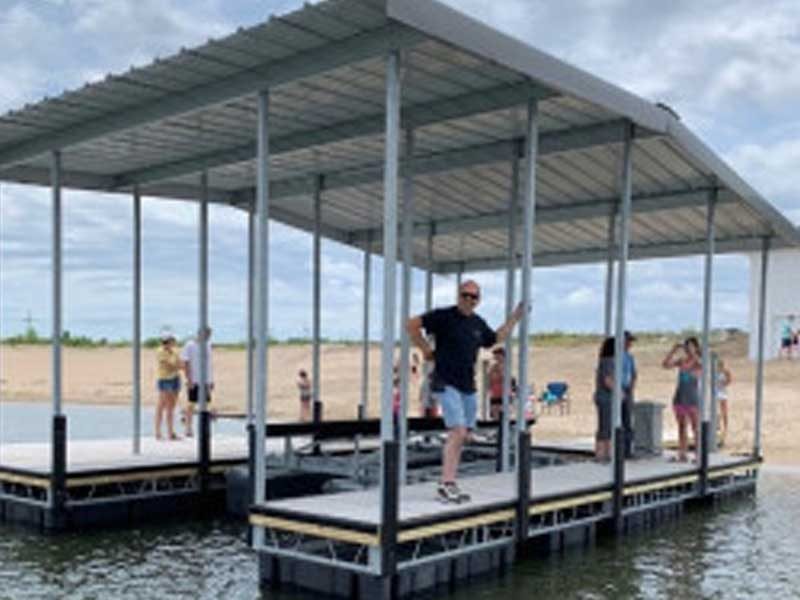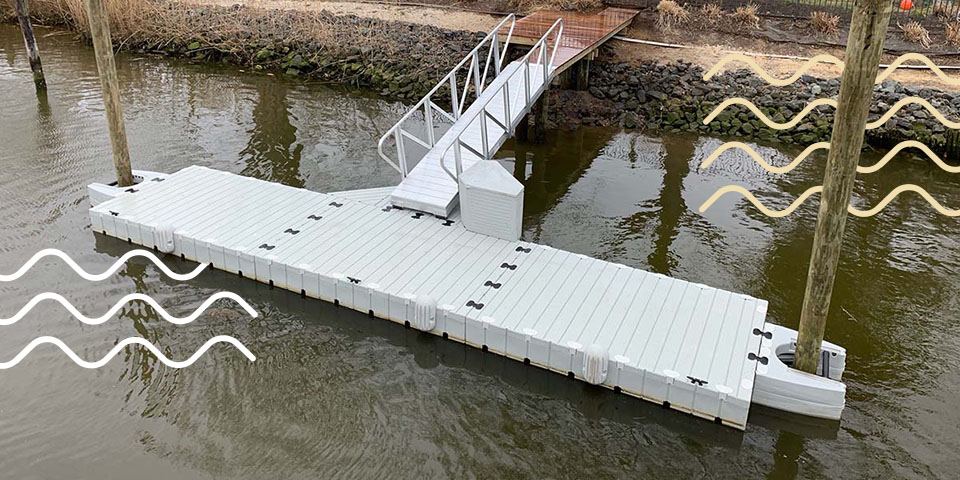Benefits of Dealing With a Developed Floating Dock Company for Comfort
Benefits of Dealing With a Developed Floating Dock Company for Comfort
Blog Article
Create the Perfect Docking Option With Floating Docks
Floating docks existing a versatile service for a variety of maritime demands, adjusting flawlessly to rising and fall water levels and diverse vessel types. Their modular nature permits fast installment and relocation, yet the option of ideal materials and layout functions is critical for making sure both functionality and aesthetic allure. As we check out the essential aspects that add to the performance of floating docks, several vital factors relating to stability and maintenance will arise, raising questions about exactly how to maximize your docking experience. The subsequent discussion will illuminate these crucial factors to consider.

Advantages of Floating Docks
Floating docks offer many advantages that make them an ideal choice for numerous maritime applications. Unlike dealt with docks, floating docks increase and loss with the tide, ensuring consistent accessibility for vessels.
Furthermore, floating docks are usually simpler and quicker to set up contrasted to standard fixed structures. Their modular layout permits straightforward setting up and disassembly, helping with maintenance and moving when essential. This versatility is specifically useful for momentary applications or in settings where problems might alter.
Floating docks also have a tendency to be a lot more eco-friendly, as they lessen disturbance to the seabed and surrounding water ecological communities. Their buoyant nature reduces the danger of damages to marine life, promoting a much healthier setting. Furthermore, these docks can be tailored to fit various vessel dimensions, making sure that they meet particular operational demands - floating dock company.
Inevitably, the mix of flexibility, ease of installation, and environmental factors to consider makes floating docks a very efficient solution for a variety of maritime requirements.
Picking the Right Materials
Selecting the proper materials for floating docks is essential to guarantee stability, durability, and longevity. The option of products directly affects the dock's efficiency in different ecological conditions, including exposure to water, sunshine, and possible wear from aquatic website traffic.
Usual products made use of for floating docks consist of aluminum, timber, and high-density polyethylene (HDPE) Aluminum is light-weight, corrosion-resistant, and calls for marginal maintenance, making it an outstanding option for durability. Its first expense can be higher compared to other products.
Wood, while cosmetically attractive and supplying a traditional look, can be prone to rot and insect damage if not effectively treated. Making use of pressure-treated timber or naturally long lasting species like cedar or redwood can reduce these problems.
HDPE is a prominent option due to its resistance to UV rays and chemicals, in addition to being eco-friendly. dock company. It is readily available and light-weight in numerous colors, permitting modification
Inevitably, the best product choice will depend on particular needs, consisting of spending plan, desired looks, and ecological factors to consider. Mindful examination of these elements will result in a durable and successful floating dock option.
Design Considerations for Stability
When designing floating docks, ensuring security is an essential facet that can considerably influence their functionality and safety and security. Stability in floating dock style is affected by different factors, including buoyancy, weight circulation, and the arrangement of elements. An optimal buoyancy system ought to use products that provide enough lift while minimizing weight. This balance makes certain that the dock stays above water, also under differing lots.
Weight distribution is critical; evenly dispersing loads throughout the dock stops turning and improves stability. Larger layouts can provide enhanced stability, especially in rough water problems, while this page longer docks might require added assistances to prevent sagging.
An additional vital consideration is the ecological effect, consisting of wave activity and wind. Incorporating functions such as sidewalls or skirting can help reduce the effects of ecological pressures, keeping security in adverse conditions. Ultimately, a combination of thoughtful design, material choice, and understanding of ecological variables will certainly generate a drifting dock that meets both security and safety and security requirements.
Installment Tips and Techniques

Next, secure the necessary licenses and stick to local guidelines, which might determine installation techniques and ecological factors to consider. If needed, involve a certified service provider experienced in floating dock Full Report installments. Use high-grade products developed for aquatic atmospheres to enhance durability and long life.
When positioning the dock, align it alongside the coastline to facilitate easy accessibility. Make sure that the anchoring system is durable, employing cinder block or helical supports to stabilize the dock versus wind and wave activity. It's important to make up seasonal water level changes, consisting of possible ice motion in cooler climates.
Throughout the installment, double-check the dock's floatation and security before settling the anchoring. Regularly evaluate the installation for any type of signs of wear or damage. By complying with these strategies and suggestions, you can achieve a secure, practical, and cosmetically pleasing floating dock installment that satisfies your needs.
Upkeep and Care Guidelines
Maintaining and caring for floating docks is important to prolonging their lifespan and ensuring secure use. Normal evaluations should be conducted to identify any type of indications of wear, damage, or marine growth. Seek cracks, loose fittings, or stained locations on the dock's surface, as these concerns can compromise structural stability.
Cleansing is vital. Use a pressure washer to get rid of algae, barnacles, and debris, which can accumulate in time. For persistent growth, think about environmentally friendly cleaning representatives that won't harm water life.
In addition, check the mooring lines and supports often to ensure they are totally free and safe and secure from rust. Replace any type of torn or harmed lines without delay to preserve security.
Throughout severe climate, such as tornados or freezing problems, take precautionary steps. Protect the dock with additional mooring lines and, if practical, get rid of any removable components to avoid damage.
Conclusion
In verdict, the application of floating docks offers a flexible and home effective docking solution appropriate for numerous maritime applications. With proper installation and routine upkeep, floating docks can provide reliable and dependable docking experiences for a large array of vessels.
As we check out the essential elements that add to the performance of floating docks, a number of crucial elements relating to stability and maintenance will certainly arise, raising concerns concerning how to enhance your docking experience. Unlike dealt with docks, floating docks increase and fall with the trend, guaranteeing consistent availability for vessels.When creating floating docks, ensuring stability is a basic aspect that can significantly impact their capability and safety. Stability in floating dock style is influenced by numerous elements, consisting of buoyancy, weight distribution, and the setup of parts. Inevitably, a combination of thoughtful style, material choice, and understanding of ecological elements will certainly yield a drifting dock that meets both stability and safety requirements.
Report this page